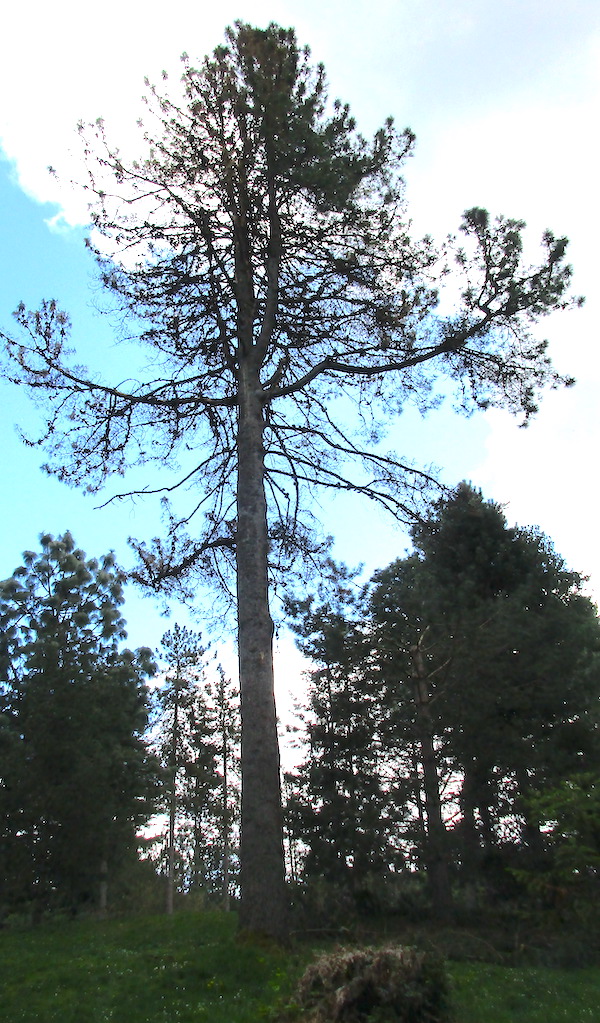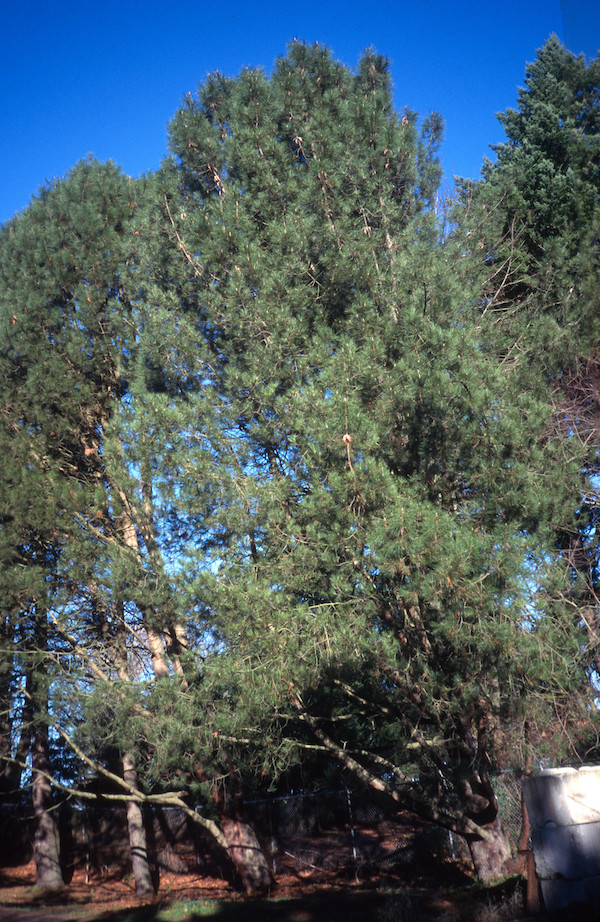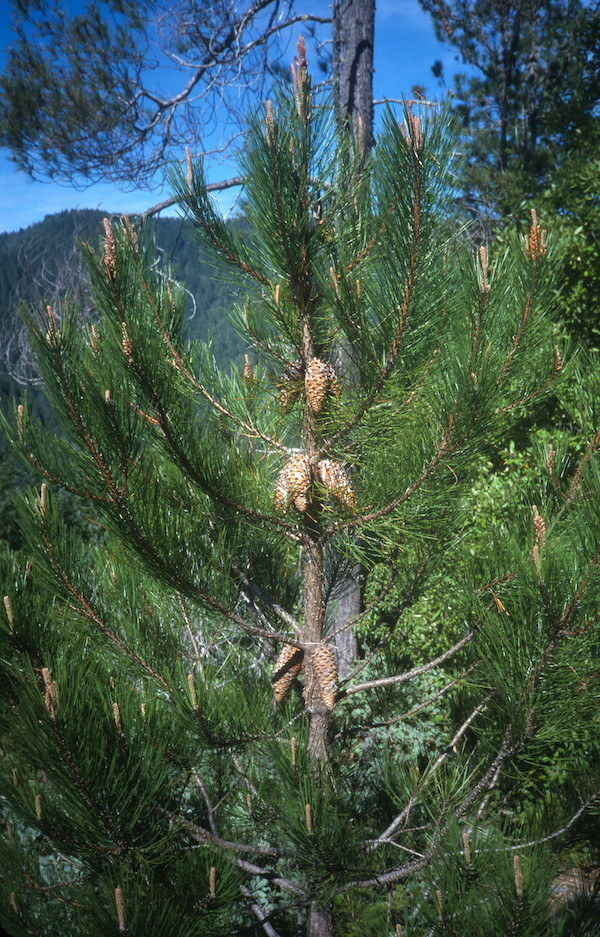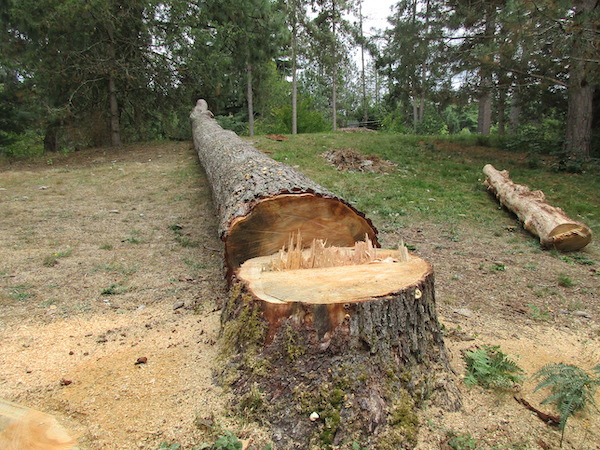| Seattle has almost 50 species of Pinus planted in the city limits, even if we exclude those found only in Washington Park Arboretum. One of the rarest, and easiest to identify, is Knobcone Pine. |
| In the wild, it grows from NW México to SW Oregon, on sunny, dry slopes, often steep, where the soil is low in nutrients, and is burned often by wildfires. Regarding such austere habitat, John Muir wrote of it "No other conifer in the range is so closely restricted to special localities. It is usually found apart, standing deep in chaparral on sunny hill-and cañon-sides where there is but little depth of soil, and, where found at all, it is quite plentiful." Knobcone Pine grows rapidly but lives a brief life. It makes cones even when young. Its distinctive cones occur in whorls, and point backwards. They are 4 to 6 inches long, markedly asymmetric and attenuated. When young, they are a cheery tan color, sometimes glistening with pitch, but in age weather dull gray. They remain closed tightly, the hardest of all pine cones, until fire liberates their seeds. If no fire occurs, the trunk swallows the cones eventually; they simply do not drop from the tree. |
| Its needles are borne in trios, and vary from 3 to 7.5 inches in length. Trees I have seen in the wild and in cultivation bear bright green foliage. Yet some populations are gray-green in color. |
| The tallest specimens recorded in both California and Oregon were 117 feet. A Washington Park Arboretum specimen (#200-54D), dating from 1954, is now 96.5 feet tall, its trunk 9 feet 1.5 inches circumference, its branch spread 55 feet wide. It grows in the pinetum. (It died and was felled in August 2023). |
| My book Trees of Seattle, 2nd edition (2006), lists various places in Seattle where the tree existed then. But about half the specimens cited are now gone. It seems that in Seattle as in the wild and in the UK, this species is short lived usually. |
| Because it is so handsome as young tree in cultivation, I think Knobcone Pine deserves planting. Later on I will add more photos to this article, showing beautiful young planted trees, in addition to old planted specimens, and young wild trees. |
Knobcone Pine native forests are suffering a multi-year drought in part exacerbated by geoengineering. Airplanes emit miniature aerosol particles of aluminum and other nano particles, which you see criss-crossing the sky. These block sun; affect rainfall; make soil more alkaline; cause fires to burn hotter. For more information see the website (https://www.geoengineeringwatch.org). maintained by a northern California resident. The website presents data that show not only are certain trees at risk from geoengineering, but eventually, all species of life on earth!
Back |

Pinus attenuata in Washington Park Arboretum 96.5 feet tall ; photo by ALJ
|

Pinus attenuata in Washington Park Arboretum in 1994 (now deceased) ; photo by ALJ
|

Pinus attenuata in the wild ; photo by ALJ
|

Pinus attenuata in the wild ; photo by ALJ
|

Pinus attenuata trunk in Washington Park Arboretum ; photo by ALJ
|

Pinus attenuata trio planted in Seattle ; photo by ALJ
|

Pinus attenuata felled trunk in Washington Park Arboretum ; photo by ALJ
|

